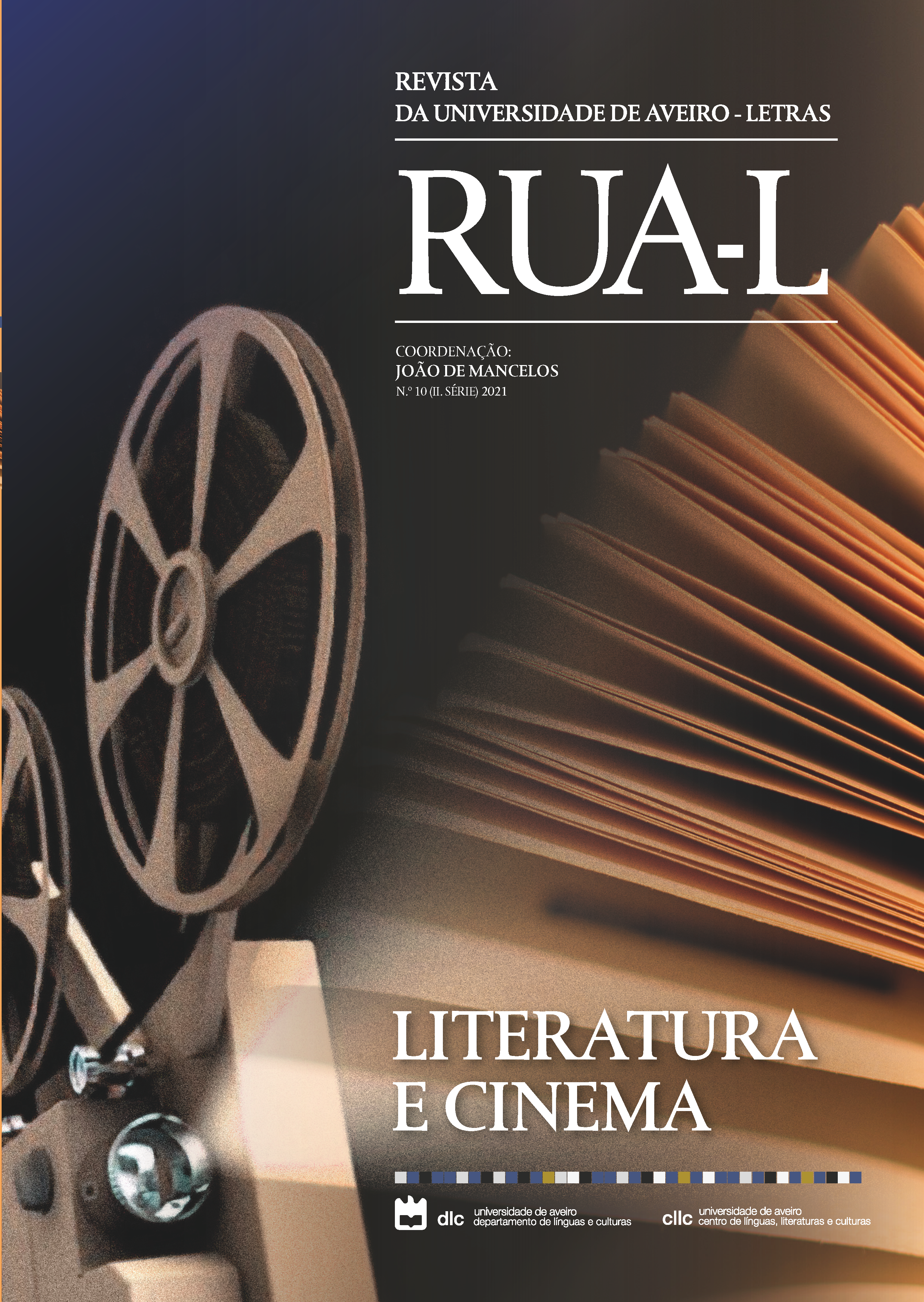Quarto com vista ‘interior’
Resumo
O livro de E.M. Forster, A Room with a View, publicado em 1908, considerado pela BBC um dos 100 melhores romances britânicos do século XX, serve de inspiração ao filme com o mesmo nome de James Ivory, de 1985. Nomeado para oito óscares, venceu três, incluindo o de melhor guião adaptado. A história critica a hipocrisia da rígida moral eduardiana do início do XX na sociedade britânica, onde os ventos da mudança começavam a soprar. A adaptação transposicional da literatura para o cinema é intertextual e intermedial, retratando um tempo de classicismo onde já se respiravam os primórdios do modernismo. A Room with a View fica marcado pelo ‘segredo’ de Lucy e George, pelas imagens e memórias de Florença, pela música, mas também pela atracção exercida por Itália sobre os ingleses, assim como do snobismo da classe média alta inglesa, em contraste com os valores de verdade e honestidade defendidos pelo pai de George, o Sr. Emerson. Em pano de fundo, fica a aparente conspiração de Charlotte, prima de Lucy, a favor do romance. A aspiração a um quarto com vista representa, metaforicamente, a abertura de horizontes e da alma da jovem Lucy Honeychurch.
Referências
ASSMAN, A. (2008). “Canon and Archive”. In A. Erll, & A. Nünning (eds.), Cultural Memory Studies – An International and Interdisciplinary Handbook (pp. 97 106). Berlin: Walter de Gruyter.
ASSMANN, A. (2011). Espaços da Recordação: Formas e Transformações da Memória Cultural (tradução de Paulo Soethe a partir do original alemão Erinnerungsräume: Formen und Wandlungen des kulturellen Gedächtnisses, de 1999). Campinas: Editora Unicamp.
BAL, M. (2002). Travelling concepts in the humanities: a rough guide. Canada: University of Toronto Press.
BAL, M. (2009). ‘Working with Concepts’. In European Journal of English Studies, vol. 13:1 (pp. 13 23). Basel: Routledge.
BANE, C. (2006). “Viewing novels, reading films: Stanley Kubrick and the art of adaptation as interpretation”. In Doctoral dissertations, Louisiana State University. https://digitalcommons.lsu.edu/cgi/viewcontent.cgi?article=3984&context=gradschool_dissertations, consultado em 6 de Outubro de 2021.
BASU, P. 2013. “Memoryscapes and Multi Sited Methods” in Research Methods for Memory Studies, E. Keightley, & M. Pickering (eds.). Edinburg: University Press. (pp. 115 131).
BRUNOW, D. (2015). Remediating Transcultural Memory: Documentary Filmmaking as Archival Intervention. Berlin: Walter de Gruyter.
CLÜVER, C. (2007). “Intermediality and Interarts Studies”. In J. Arvidson, M. Askander, J. Bruhn, & H. Führer (eds.). Changing Borders: Contemporary Positions in Intermediality (pp. 19 37). (Intermedia Studies Press; Vol. 1). Lund: Intermedia Studies Press.
CONFINO, A. (1997). “Collective Memory and Cultural History: Problems of Method”. In The American Historical Review, Vol. 102, No. 5 (Dec., 1997) (pp. 1386 1403). Chicago: University Press.
DOUGLAS, K.M., USCINSKI, J.E., SUTTON, R.M., CICHOCKA, A., NEFES, T., ANG, C.S., & DERAVI, F. (2019). “Understanding Conspiracy Theories”, in Advances in Political Psychology, Vol. 40, Suppl. 1, pp 3 35. International Society of Political Psychology. USA: North Carolina. https://onlinelibrary.wiley.com/doi/pdf/10.1111/pops.12568, consultado em 8 de Outubro de 2021.
ERLL, A., & RIGNEY, A. (2009) “Introduction: Cultural Memory and its Dynamics”. In A. Erll, & A. Rigney (eds.) Mediation, remediation, and the dynamics of cultural memory (pp. 1 11). Berlin: Walter de Gruyter.
ERLL, A. (2008). “Literature, Film, and the Mediality of Cultural Memory”. In A. Erll, & A. Nünning (Eds.), Cultural Memory Studies: An International and Interdisciplinary Handbook (pp. 389 398). Berlin: Walter de Gruyter.
FORSTER, E.M. (1995). A Room with a View. Mineola, New York: Dover Thrift Editions. (Texto original de 1908).
FORSTER, E.M. (2002). Um Quarto com Vista (tradução de Manuel Seabra). Porto: Público Comunicação Social. (Texto original de 1908).
GRAY, A. (2013). “Televised Remembering”. In E. Keightley, & M. Pickering, (eds.), Research Methods for Memory Studies (pp. 79 96). Edinburgh: University Press.
HALL, S. (2009). Representation: cultural representations and signifying practices. London: SAGE. (First published in 1997).
HALL, S. (1999). “Encoding/Decoding”. In P. Marris, & S. Thornham (eds.) Media Studies: A Reader (second edition) (pp. 51 61). Edinburgh: University Press.
HUTCHEON, L., & O’FLYNN, S. (2013). A Theory of Adaptation (second edition). New York, London: Routledge/Taylor & Francis Group.
HUTCHEON, L. (2013). Uma Teoria da Adaptação (tradução de André Cechinel), (2.ª edição). Santa Catarina: Editora UFSC.
HUTCHEON, L. (2006). A Theory of Adaptation. New York, London: Routledge/ /Taylor & Francis Group.
JHABVALA, R.P. (1985). Screenplay A Room with a View. Based on the novel by E.M. Forster. http://www.dailyscript.com/scripts/A_Room_With_A_View.pdf, consultado em 29 de Setembro de 2021.
LOWENTHAL, D. (1997). “Landscape Transformations”. In P. Groth, & T.W. Bressi (eds.), Understanding Ordinary Landscapes (pp. 180 188). New Haven: Yale University Press.
MITCHELL, M. (1993). Gone with the Wind. New York: Warner Books. (Copyright 1936 by The Macmillan Company).
NEUMANN, B. (2013). “The Literary Representation of Memory”. In A. Erll, & A. Nünning (eds.), Cultural memory studies: an international and interdisciplinary handbook (pp. 333 343). Berlin: Walter de Gruyter.
NORA, P. (1978). “Mémoire Collective”. In La Nouvelle Histoire. J. Le Goff, R. Chartier, & J. Revel (eds.). Paris: Retz.
SANDERS, J. (2006). “Defining Terms”. In Adaptation and Appropriation (pp. 17 41). New York, London: Routledge/Taylor & Francis Group.
Direitos de Autor (c) 2022 RUA-L: Revista da Universidade de Aveiro. Letras

Este trabalho está licenciado com uma Licença Creative Commons - Atribuição 4.0 Internacional.



